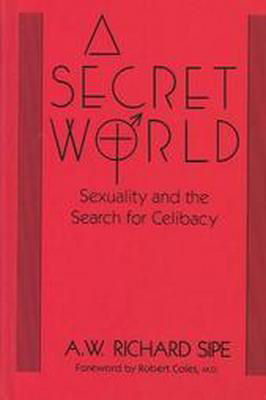
|
Posted January 15, 2008
Book: A Secret World: Sexuality and the Search for Celibacy Author: A.W. Richard Sipe Brunner/Mazel, Inc. New York. 1990. Pp. 324 An Excerpt from the Jacket:
Within these pages are stories of struggle and stories of faith culled from interviews with 1500 persons — many with priests themselves and others with men and women who have intimate knowledge of priests’ celibate/sexual behavior. What is the role of celibacy in the priesthood? How is it achieved? How is it integrated? Is the fall from grace inevitable and what does that imply? Who are the saints and what of the sinners? These are among the questions that form the core of the author’s exploration. The opening chapters of the book explain the reasons for this study, as well as its design and goals. In addition, the author investigates the origins of celibacy, its current place in the Church, and its full range of definition. The Practice Versus the Profession delves into more specific areas of celibate/sexual patterns among priests — heterosexuality, homosexuality, masturbation, pedophilia, sexual compromises, sex drive, and abortion. Finally, The Process and the Attainment considers the very human dimensions of the celibate expectation and for the first time provides a dynamic model for the development of celibate identity. An Excerpt from the Book: The question remains: Who are the men who succeed in celibacy? . . .Over the years, I have found them to be almost universally humble and very reticent about claiming “success” for themselves. Contrary to what might be expected, I found in them that a sense of humanness and flexibility of character were far more common than rigidity. Also remarkable was their general sense of good humor rather than the wizened anger and resentment some might expect among sexually deprived persons. . . . . Judging from the men with whom I have spoken, I have come to agree with Franciscan theologian, Fr. Martin Pable (1975), who recast celibate asceticism into a positive statement that refuses to be encapsulated by popular presuppositions. Humanness unbounded by sexuality, love beyond loneliness, sexual identity grounded in real generativity, and transcendent awareness and activity are all open to the celibate and are the reward of his discipline. . . . I identified four elements that were universally present in all the celibate achievers. . . .Men of diverse circumstances, from librarian to missionary, scholar to urban activist, all demonstrated a well-defined system of prayer that was an integral part of their day and existence. Each man was productive and, even if pressured by particular situations, was happily working. Each had a clear idea of whom he considered to be his community and family; the Church as such did not always rate as paramount, but every man looked to a group of specific people to whom he felt devoted. Finally, each man’s life was one of meaningful service. Presuming generally good mental health and physical aptitude, I believe taht it is within these four areas that the keys to understanding the successes and failures of celibate adjustment are to be found. Table of Contents 1. Why this subject? Apologia pro studiis suis 2. Celibacy and the sexual revolution 3. The origins of celibacy 4. The meanings of celibacy 5. Patterns of heterosexuality 6. The homosexualities 7. The masterbations 8. Priests and children 9. Sexual compromises 10. The sex drive 11. When priests become fathers 12. Living with celibacy 13. The achievement of celibacy 14. The future of celibacy: reality and ritual |
|
